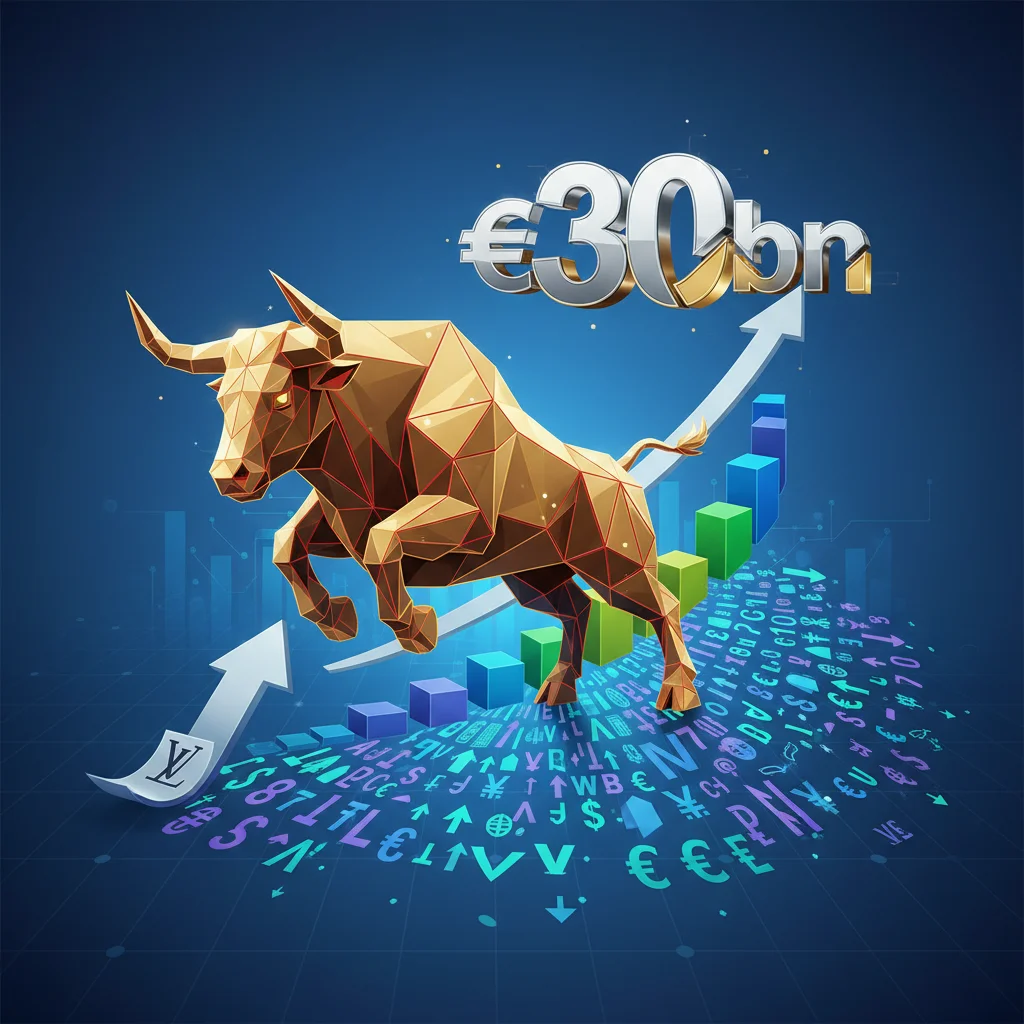
LVMH’s Bull Run: Decoding the €30bn Surge and What It Signals for the Global Stock Market
In the world of finance and high-stakes investing, certain companies act as barometers for the health of the entire global economy. When one of these giants makes a dramatic move, investors, economists, and business leaders worldwide pay close attention. This is precisely what happened when LVMH Moët Hennessy Louis Vuitton, the luxury empire helmed by billionaire Bernard Arnault, saw its shares skyrocket, painting a vibrant picture of resilience in a sector that many had feared was losing its shine.
The luxury conglomerate’s shares surged by as much as 13% in a single day of trading, adding a staggering €30 billion to its market capitalization. This explosive rally wasn’t just a win for LVMH; it sent a powerful ripple effect across the entire luxury sector, lifting peers like Hermès, Kering, and Richemont. The catalyst? A set of fourth-quarter results that defied pessimistic forecasts and signaled a potential end to the much-discussed luxury downturn. But this is more than just a story about expensive handbags and champagne; it’s a crucial data point for anyone trying to navigate the complexities of the current stock market and predict the trajectory of global consumer sentiment.
The Anatomy of a Luxury Rebound
To understand the significance of LVMH’s performance, we must look beyond the headline number. The rally was fueled by the company’s announcement of a 10% year-on-year organic revenue growth in the final quarter of 2023, bringing its full-year revenue to an impressive €86.2 billion. This figure comfortably beat analyst expectations and directly challenged the narrative of a sector-wide slowdown.
The strength was not uniform across the board, which provides deeper insights into consumer priorities. The core Fashion & Leather Goods division, home to powerhouse brands like Louis Vuitton and Christian Dior, was the star performer. This division alone grew by 9% in the fourth quarter, demonstrating the enduring appeal and pricing power of the group’s most iconic names. This resilience at the very top end of the market suggests that while aspirational shoppers may be pulling back, the wealthiest clientele remains undeterred.
Below is a breakdown of the organic revenue growth in the fourth quarter for LVMH’s key business groups, highlighting the areas of strength and relative softness.
| LVMH Business Group | Q4 2023 Organic Revenue Growth |
|---|---|
| Fashion & Leather Goods | +9% |
| Perfumes & Cosmetics | +10% |
| Watches & Jewelry | +3% |
| Selective Retailing (e.g., Sephora) | +21% |
| Wines & Spirits | -7% |
As the table illustrates, the performance of the Selective Retailing division, largely driven by beauty retailer Sephora, was exceptional. This points to a trend where accessible luxury, particularly in cosmetics, is booming. Conversely, the Wines & Spirits division faced headwinds, largely due to a post-pandemic normalization in the U.S. market after a period of significant overstocking. This divisional breakdown is critical for investors, as it showcases the benefits of LVMH’s diversified model, where strength in one area can offset temporary weakness in another.
A Bellwether for Global Consumer Health
Why does a luxury goods company command so much attention in serious economics and finance circles? Because LVMH’s customer base—spanning from the ultra-wealthy to the aspirational middle class across the globe—makes it a uniquely powerful bellwether for discretionary spending. The slowdown in 2023 was driven by two key factors: a normalization of spending in the U.S. after a stimulus-fueled boom and a Chinese economic recovery that proved far less robust than anticipated.
LVMH’s latest results provide a more nuanced reading of this global picture. Jean-Jacques Guiony, LVMH’s chief financial officer, noted that trends were improving in China, with business in the fourth quarter being “pretty good.” This is a vital piece of the puzzle, as the health of the Chinese consumer is a primary driver of growth for the entire sector. Meanwhile, demand from American tourists in Europe and Japan helped offset softer local demand in the U.S. This geographic rebalancing act is a testament to the group’s global footprint and its ability to capture value wherever it emerges.
For those engaged in stock market trading, these results offer a potential leading indicator. If the high-end consumer is regaining confidence, it could foreshadow a broader improvement in consumer sentiment, which would have positive implications for other sectors, from travel and hospitality to premium technology and automotive.
The Future of Luxury: Technology, Trust, and Trading
Looking ahead, the luxury sector is not just about heritage and craftsmanship; it’s increasingly about technology and innovation. For the modern investor, understanding these future-facing trends is as important as analyzing quarterly earnings.
One of the most significant technological shifts impacting the sector is the rise of financial technology, or fintech. Modern trading platforms have democratized access to international markets, allowing retail investors to easily buy shares in European giants like LVMH. This broadens the investor base and increases market liquidity. Furthermore, the data analytics and AI-driven insights provided by fintech tools empower investors to make more informed decisions, dissecting company performance on a granular level that was once the exclusive domain of institutional analysts.
Beyond the trading floor, another technology is poised to reshape the very foundation of luxury: blockchain. In an industry where authenticity is paramount, blockchain offers a revolutionary solution for tracking provenance and combating the multi-billion dollar counterfeit market. By creating an immutable digital ledger for each high-value item, brands can offer customers an unprecedented level of verification and trust. For a long-term investor, a company’s investment in such technology is a forward-indicator of its commitment to protecting its most valuable asset: its brand integrity. This convergence of luxury and technology represents a new frontier for value creation and a key area for investors to monitor.
Conclusion: A Cautiously Optimistic Outlook
LVMH’s powerful rebound is more than a one-day wonder on the stock market. It is a multi-faceted signal about the resilience of top-tier brands, the shifting tides of the global economy, and the enduring human desire for quality and excellence. It suggests that while economic headwinds may cause turbulence, the world’s most powerful luxury names have the brand equity and operational agility to navigate the storm.
For investors, the key takeaway is the importance of quality and diversification. LVMH’s success underscores the value of a portfolio of best-in-class brands that can weather economic cycles. While the luxury downturn may be easing, the path ahead will likely be uneven. The market will be closely watching for sustained momentum in China and signs of stabilization in the U.S. But for now, the message from the world’s largest luxury group is one of confident, resounding growth, offering a welcome ray of sunshine for the global economic outlook.


